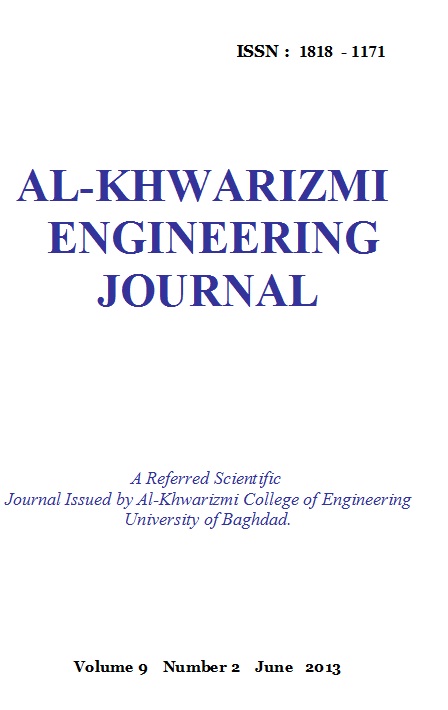Drilling of FR-4 Composite Materials Using Single Pulse of Nd:YAG Laser
Keywords:
Nd:YAG Laser, FR-4 Composite materials, Laser DrillingAbstract
Laser drilling is capable of producing small, precisely positioned holes with high degree of reproductively. In this paper , IR millisecond Nd:YAG single pulsed laser was used to determine the effect of laser parameters on the drilled hole of the glass - fiber reinforced epoxy composite FR-4 sample of 2 mm in thickness . The type of laser source was GSI lumonics JK760TR Series laser 1.064μm system in a CNC cabin. The JK760TR series has a 0.3-50ms pulse length and a maximum repetition rate 500Hz with an average power of 600W. The investigation of single pulse laser drilling in this paper was based on theoretical and experimental solutions. In single pulse technique, the investigation included focal plane position fpp, pulse shape, laser peak power, and pulse duration. It was found that (-1) was the best fpp due to less taper for the drilled holes made by this level (Entrance hole =0.68, Exit hole = 0.27). To predict pulse shape effects; three types were : rectangular , rump-up and cool down, it were examined found that rectangular pulse was efficient more than the other types due to its ability to produce holes with less tapering as compared with others types. Also its found that all pulse shapes had the same effect on the materials microstructure . Laser peak power and pulse duration had the predominant affects on the hole dimensions and edge quality without any defect except hole tapering.
Downloads
Downloads
Published
Issue
Section
License
Copyright: Open Access authors retain the copyrights of their papers, and all open access articles are distributed under the terms of the Creative Commons Attribution License, which permits unrestricted use, distribution, and reproduction in any medium, provided that the original work is properly cited. The use of general descriptive names, trade names, trademarks, and so forth in this publication, even if not specifically identified, does not imply that these names are not protected by the relevant laws and regulations. While the advice and information in this journal are believed to be true and accurate on the date of its going to press, neither the authors, the editors, nor the publisher can accept any legal responsibility for any errors or omissions that may be made. The publisher makes no warranty, express or implied, with respect to the material contained herein.












